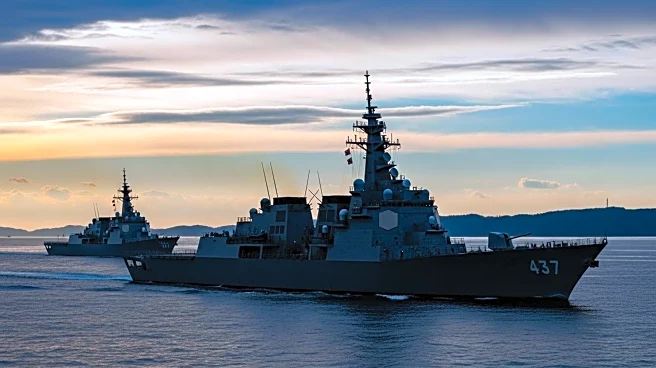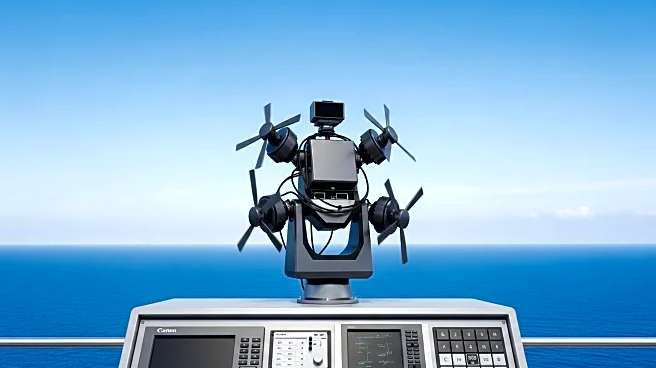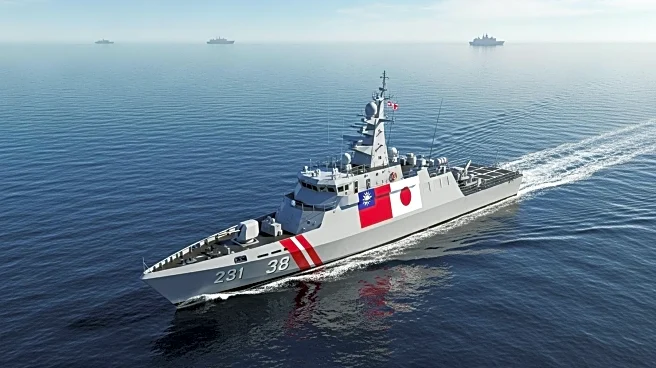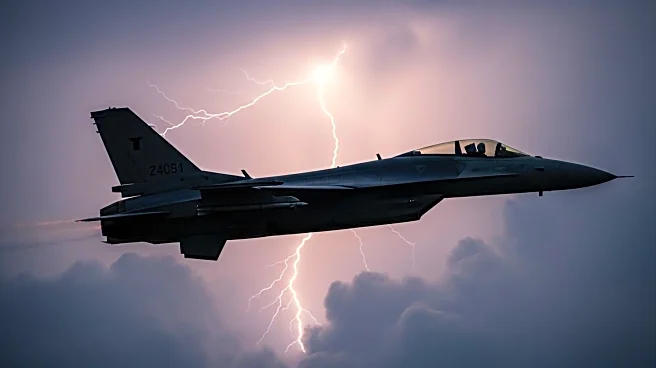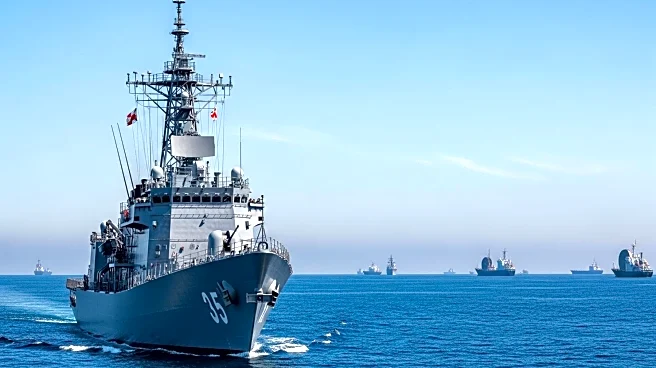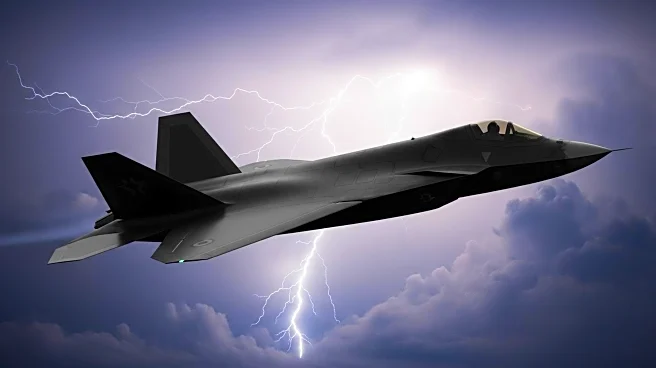What's Happening?
China has increased its naval presence in the North Pacific, with a spy ship transiting a waterway between Japan's main islands. The Japanese Ministry of Defense has stated its intention to continue surveillance and intelligence gathering in response to these activities. The Chinese vessel, identified as CNS Kaiyangxing, was tracked moving through the Tsugaru Strait and Tsushima Strait, both designated as international waterways by Japan. This movement is part of China's broader strategy to expand its military presence in the Pacific, challenging U.S.-led alliances.
Why It's Important?
China's naval activities near Japan are significant as they reflect the ongoing geopolitical tensions in the region. The expansion of China's military presence poses challenges to U.S. and allied defense strategies, potentially altering the balance of power in the Pacific. Japan's response, including increased surveillance and defense measures, highlights the strategic importance of maintaining regional security and stability. These developments could influence diplomatic relations and defense policies among Pacific nations.
What's Next?
China is likely to continue its naval activities around Japan, prompting Japan to strengthen its defense posture to protect its territorial waters. The situation may lead to increased military cooperation between Japan and its allies, including the United States, to counter China's growing influence in the region.
Beyond the Headlines
The presence of Chinese warships near Japan underscores the complexities of international maritime law and the strategic use of international waterways. As nations navigate these legal frameworks, the potential for diplomatic disputes and military confrontations remains a critical concern.

